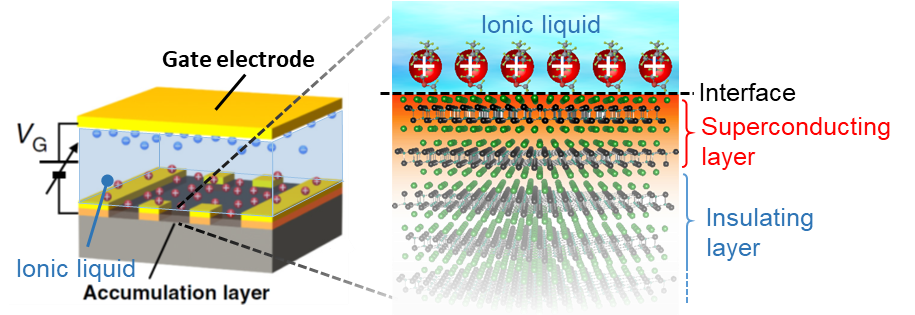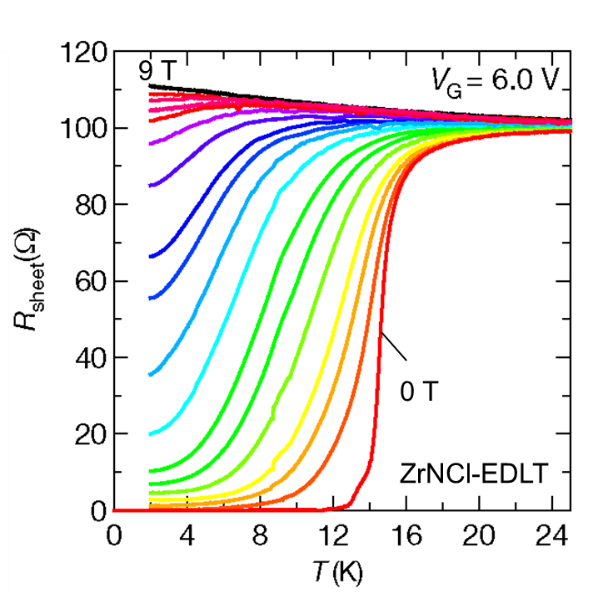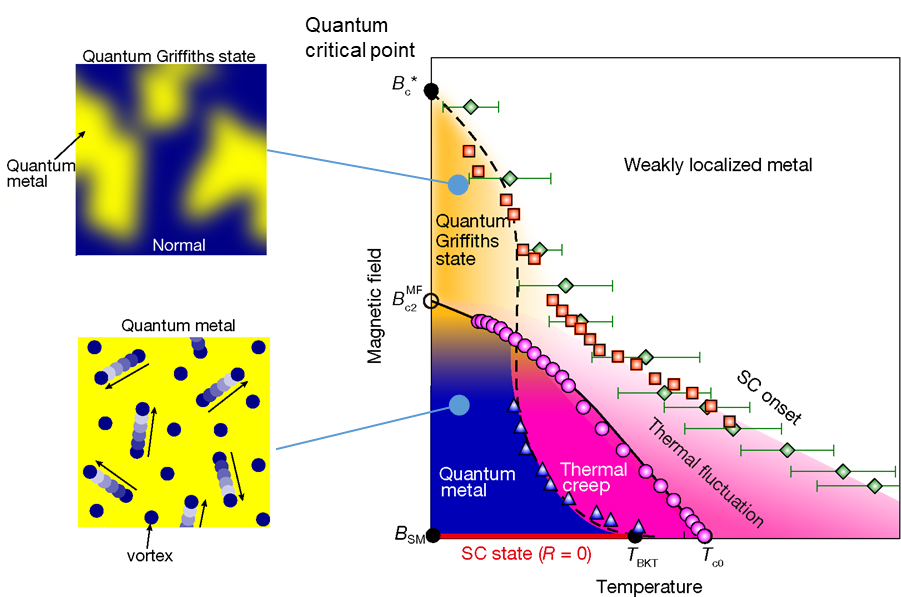Topics
2020.4.9
Approaching the intrinsic nature of two dimensional superconductors
Low temperature materials science group
Superconductivity is a typical quantum phenomenon at low temperature. While most superconducting phenomena occur in three-dimensional or quasi-two-dimensional electron systems, the intrinsic properties of the superconductors at the two-dimensional limit, where a long-range order is supposed to be suppressed, have been one of the long-argued questions. We have recently found that highly crystalline two-dimensional superconductors induced at clean crystal surfaces exhibit the various novel quantum states.
In general, the motion of electrons in a two-dimensional system is significantly affected by disorder such as defects and impurities. In fact, the many properties of the conventional thin-film superconductors have been explained based on the effects of disorder, which is unintentionally included during sample preparation. On the other hand, it has been urgently desired to elucidate the intrinsic nature of an ideal two-dimensional superconductor without disorder. To tackle this issue, we fabricated electric double-layer transistors (field-effect transistor using ionic liquid: Fig. 1) on a clean surface of atomic layer material such as ZrNCl or MoS2 obtained by the exfoliation (Scotch tape method). In these devices, the electrons are accumulated on the top most surface due to the strong electric field generated by ions adsorbed near the interface, so it is possible to artificially realize the 1-2 nm thick two-dimensional electron systems with the minimal disorder. Then, we succeeded in inducing a superconducting transition there, and investigated its electrical resistance in a magnetic field in detail.

Fig.1 A schematic diagram of electric-double-layer transistor (EDLT).
As a result, as shown in Fig. 2, we found a “quantum metallic state”, in which the drop of electrical resistance saturates with a finite value toward zero temperature in out-of-plane magnetic fields. This phenomenon can be explained by the motion of quantum vortices in the sample through the quantum tunneling process, which becomes remarkable together with two-dimensionality and weak disorder. Furthermore, it is clarified that in a strong magnetic field, the quantum metallic state transfers to the normal state at a quantum critical point called “Griffiths singularity” (Bc* in Fig. 3) passing through the quantum Griffiths state, which is composed of the superconducting islands (short range ordered region of superconductivity by quantum fluctuation) [1]. As shown in Fig. 3, the temperature-magnetic field phase diagram of the two-dimensional superconductor is rich in variety, where quantum fluctuation dominates.
The above result is an example that captures the intrinsic nature of the highly crystalline two-dimensional superconductor. These also have another aspect of superconductivity, in which the spins are locked by the spin-orbit interaction originating from the broken inversion symmetry of the two-dimensional crystal. Due to this feature, the new generation two-dimensional superconductors continue to provide various quantum phenomena, such as the anomalous increase of in-plane critical magnetic field [2] and the rectification effect of superconducting current [3].

Fig. 2 Resistive transition of ZrNCl-EDLT in out-of-plane magnetic fields [1].

Fig. 3 Temperature-magnetic field phase diagram of a
highly-crystalline two-dimensional superconductor [1].
References
[1] Nat. Commun. 9, 778 (2018).
[2] Nat. Phys. 12, 144 (2016).
[3] Sci. Adv. 6, eaay9120 (2020).

